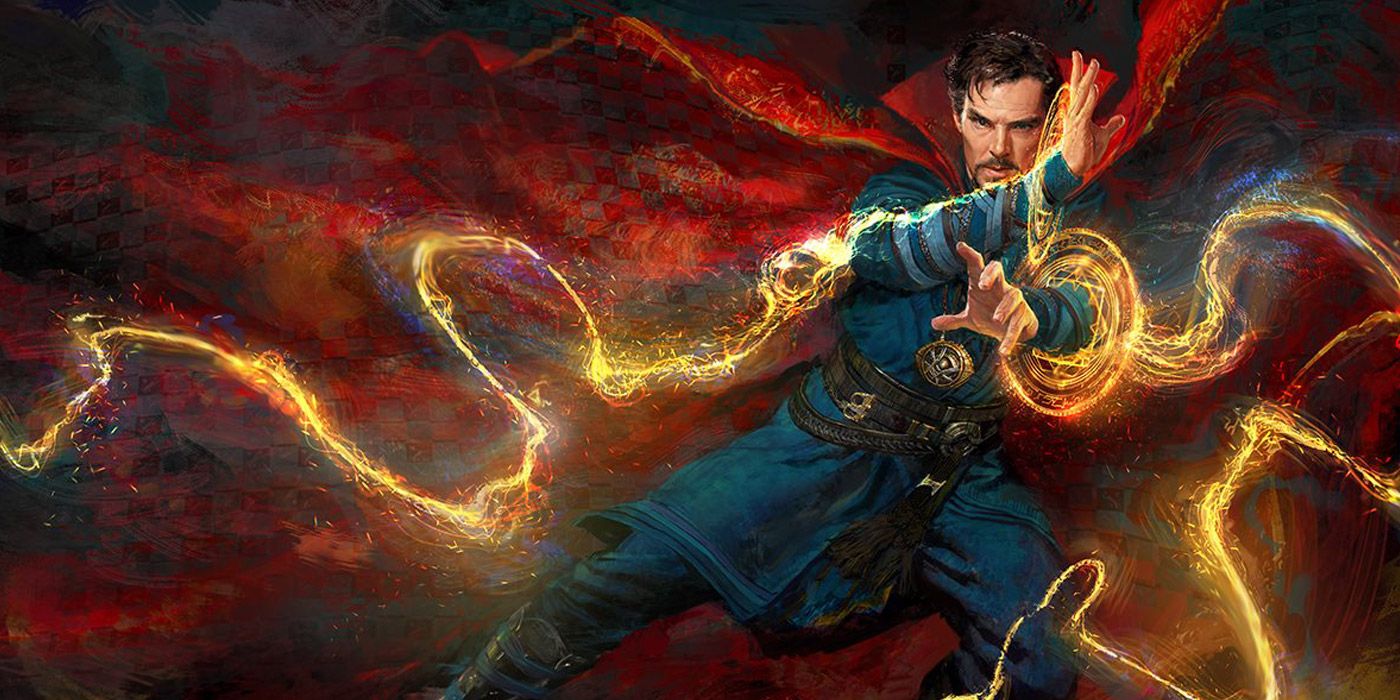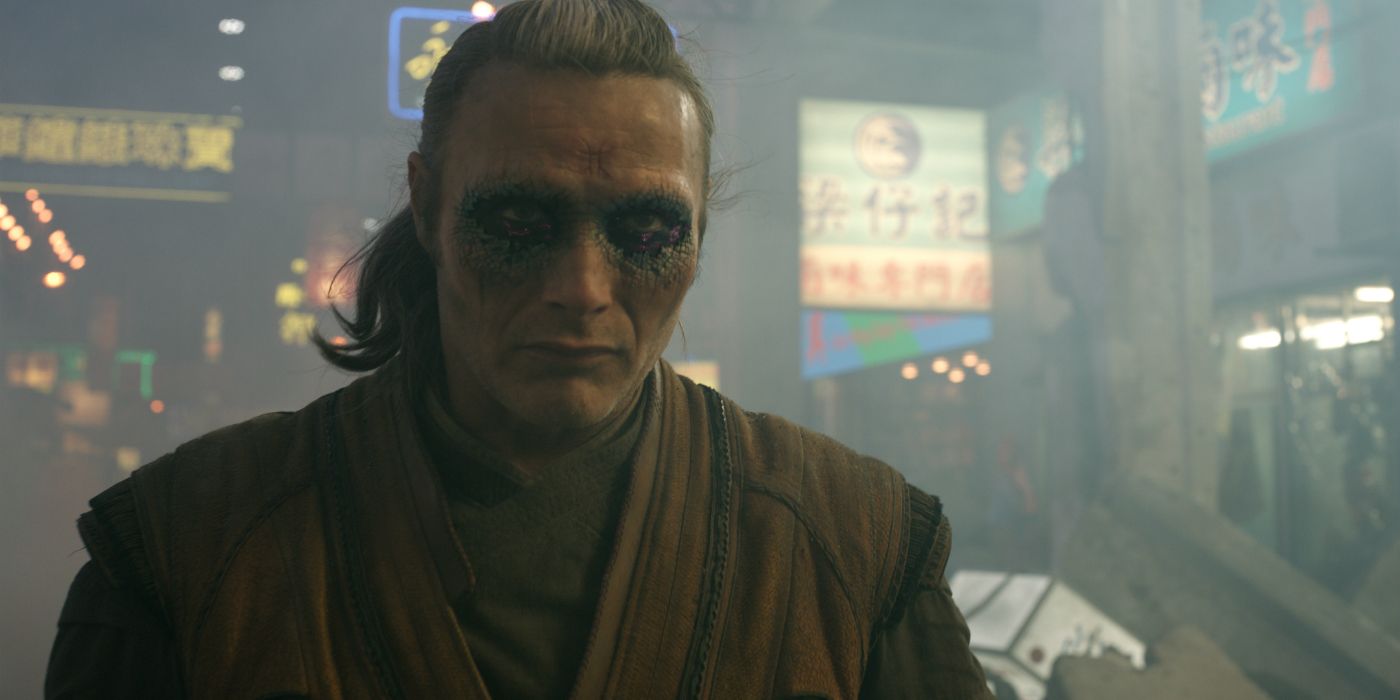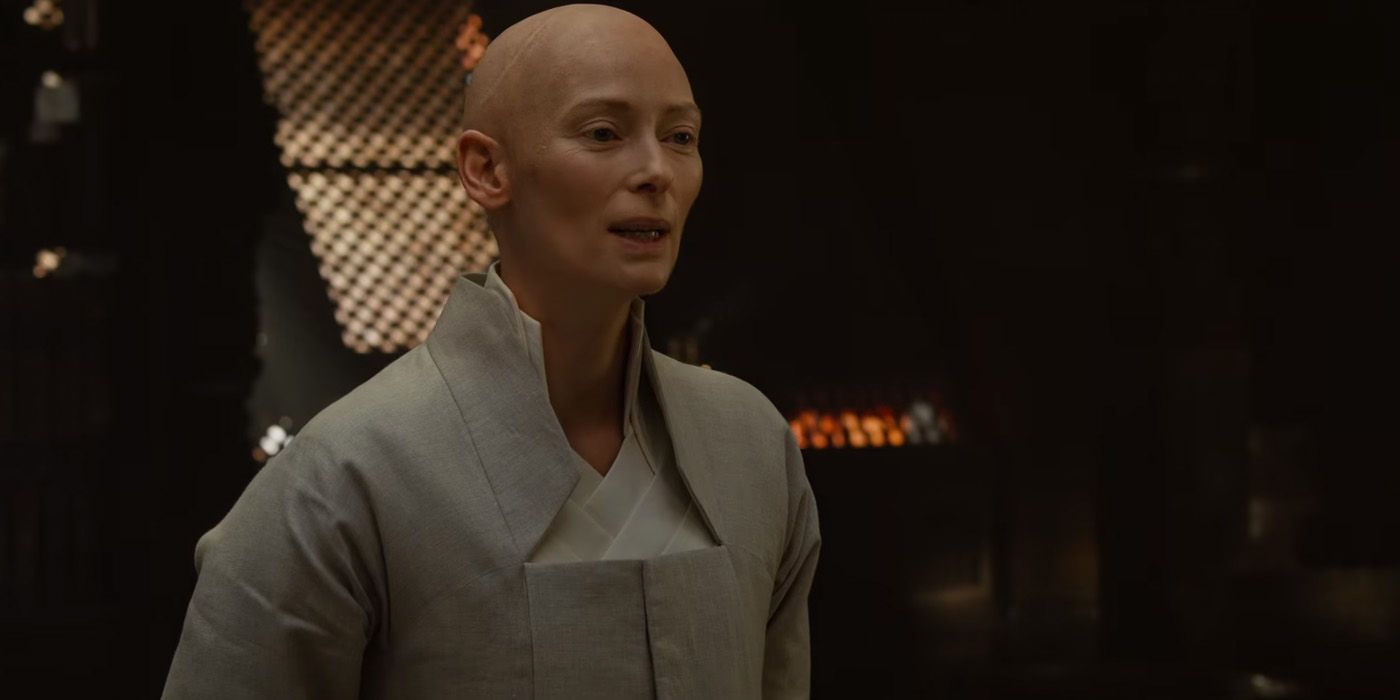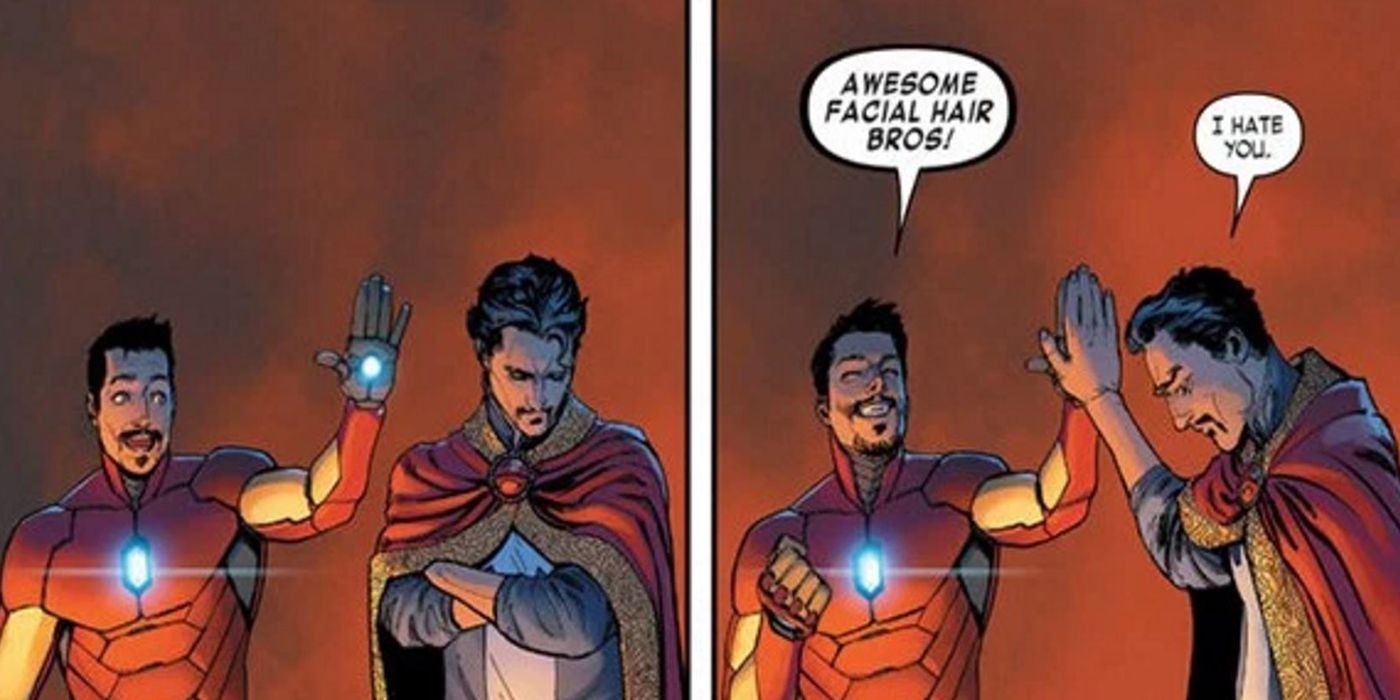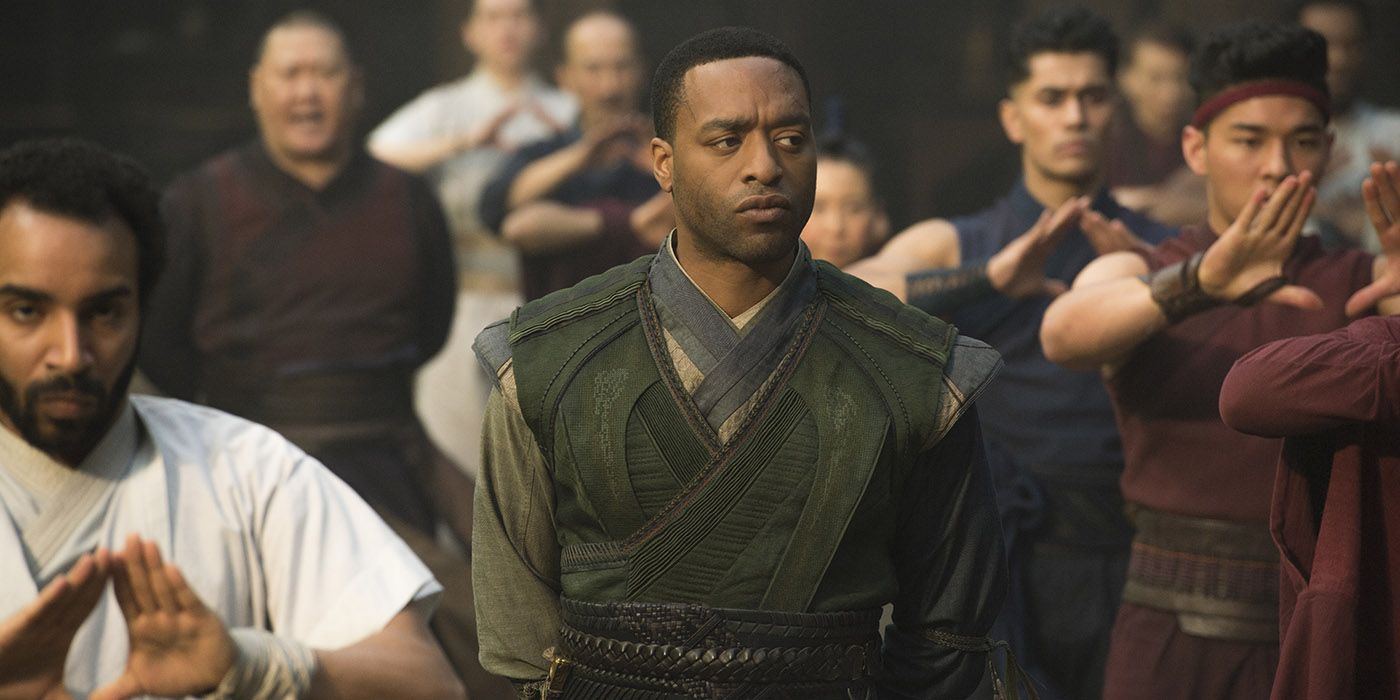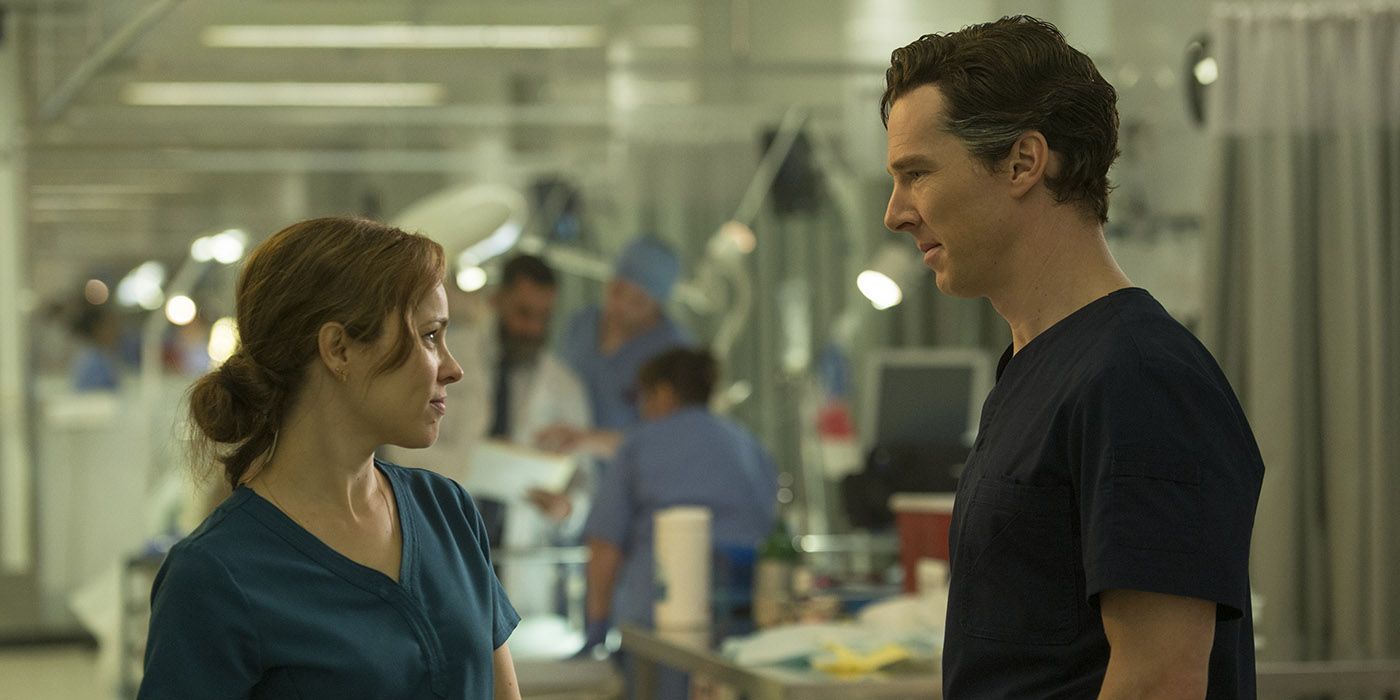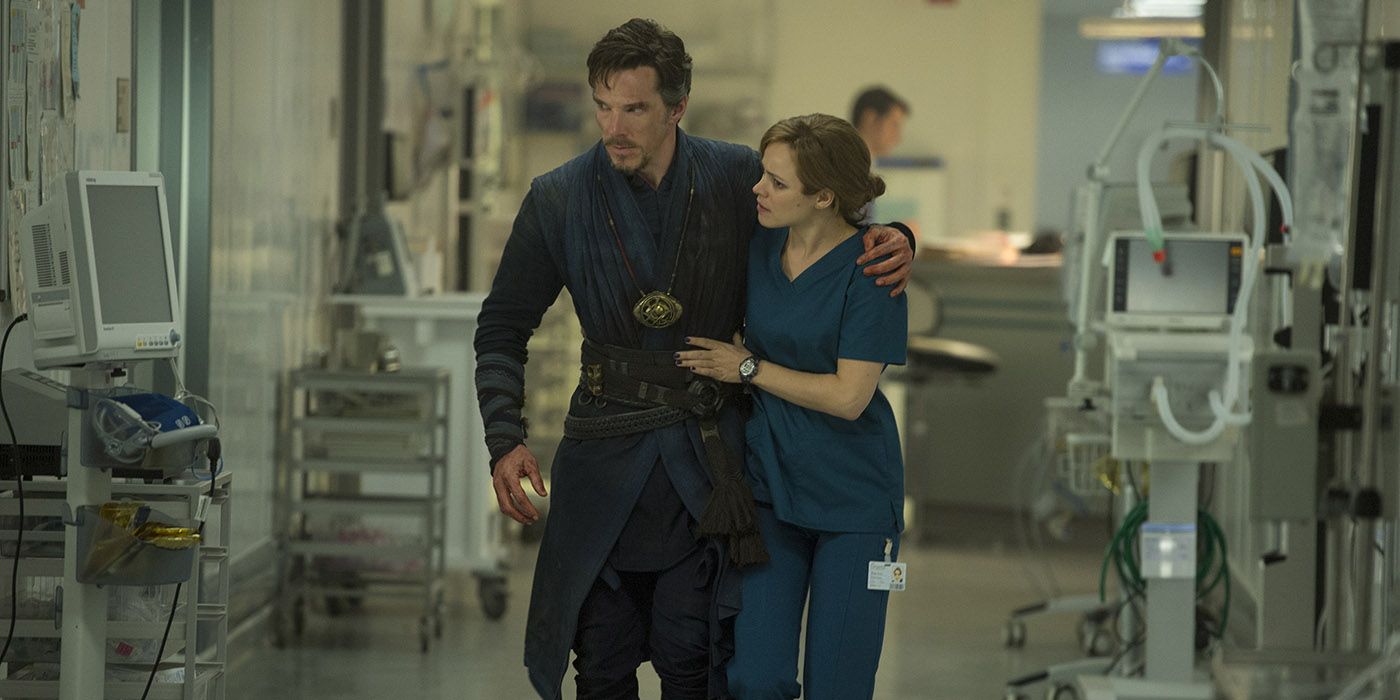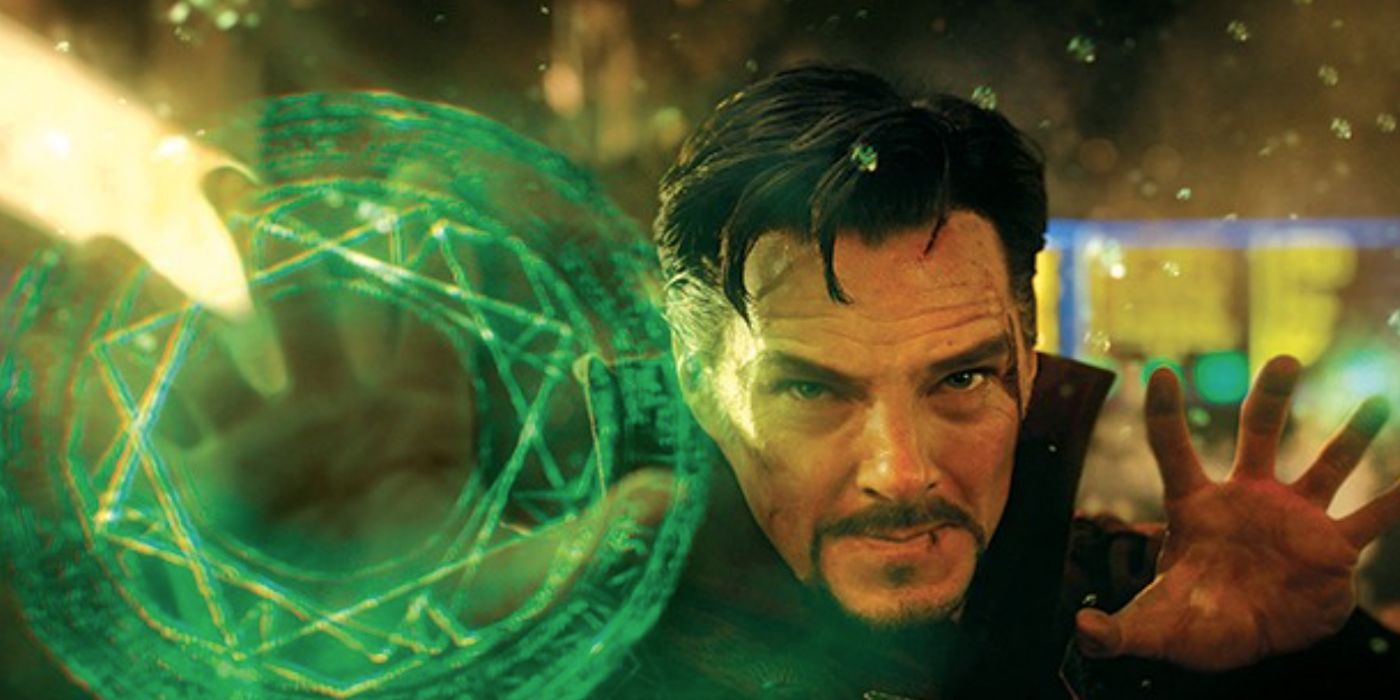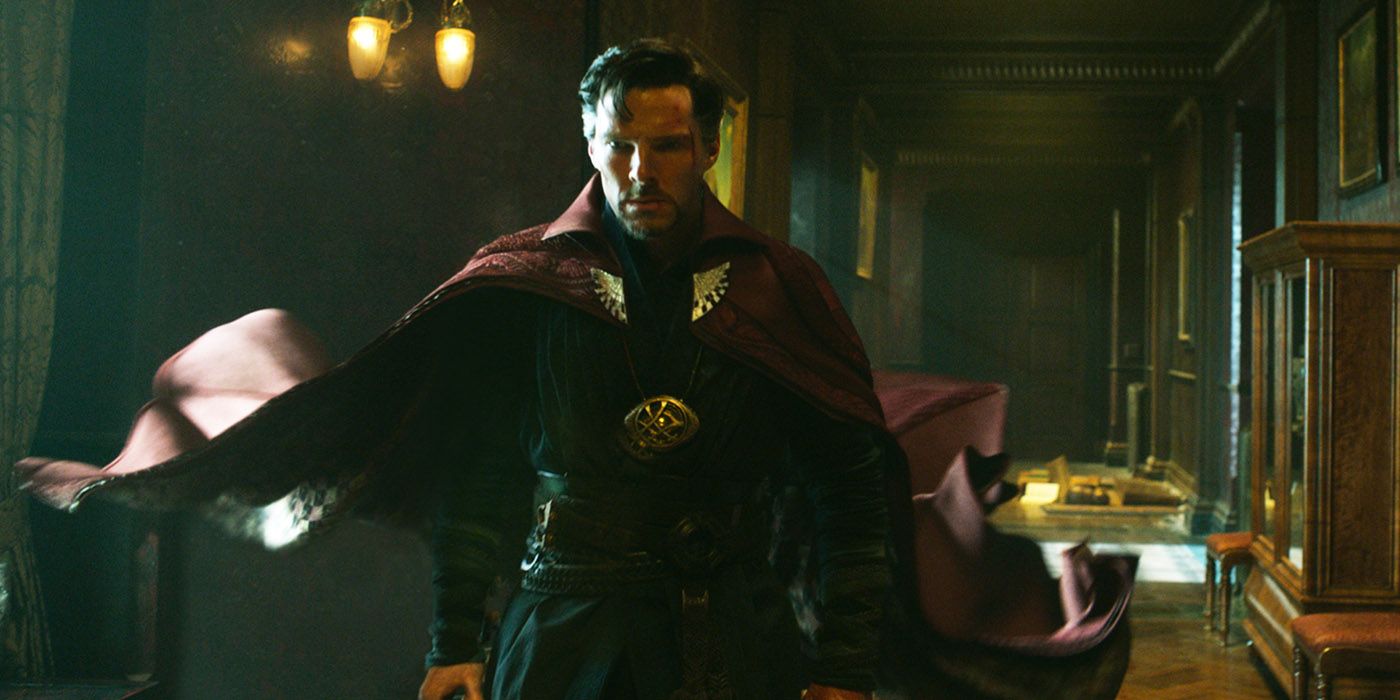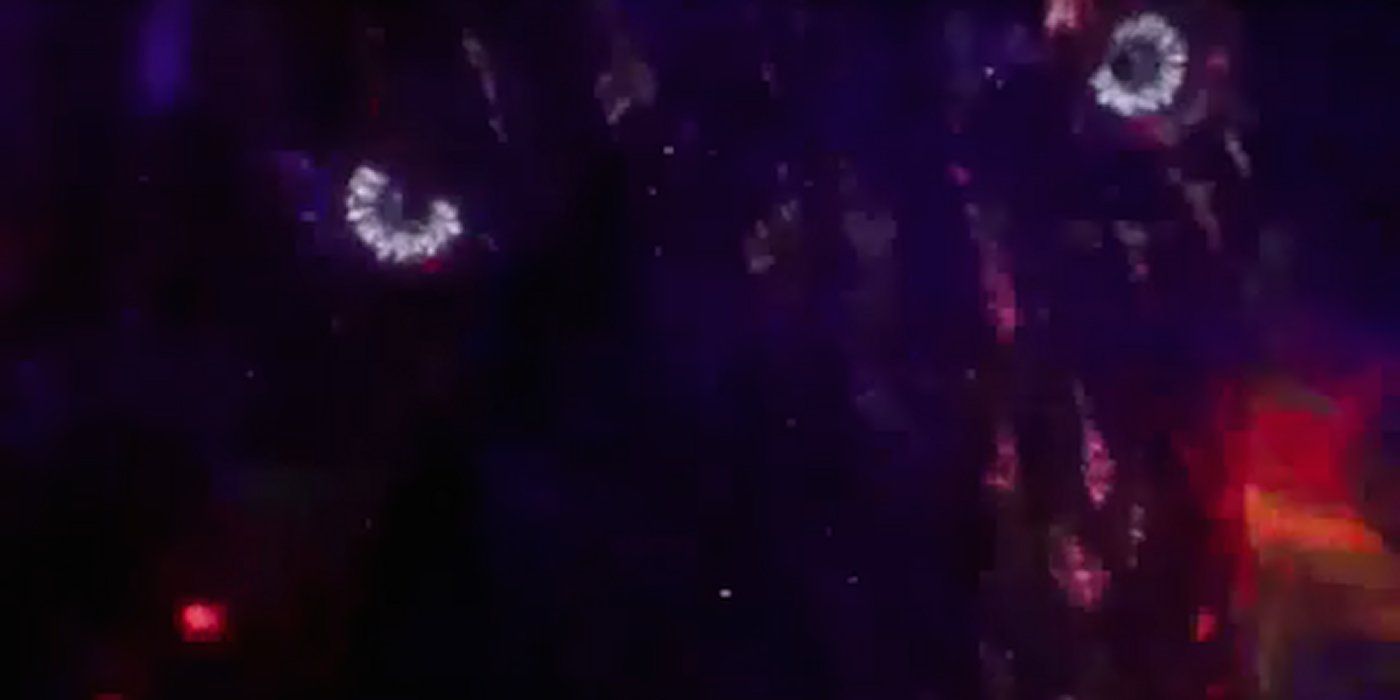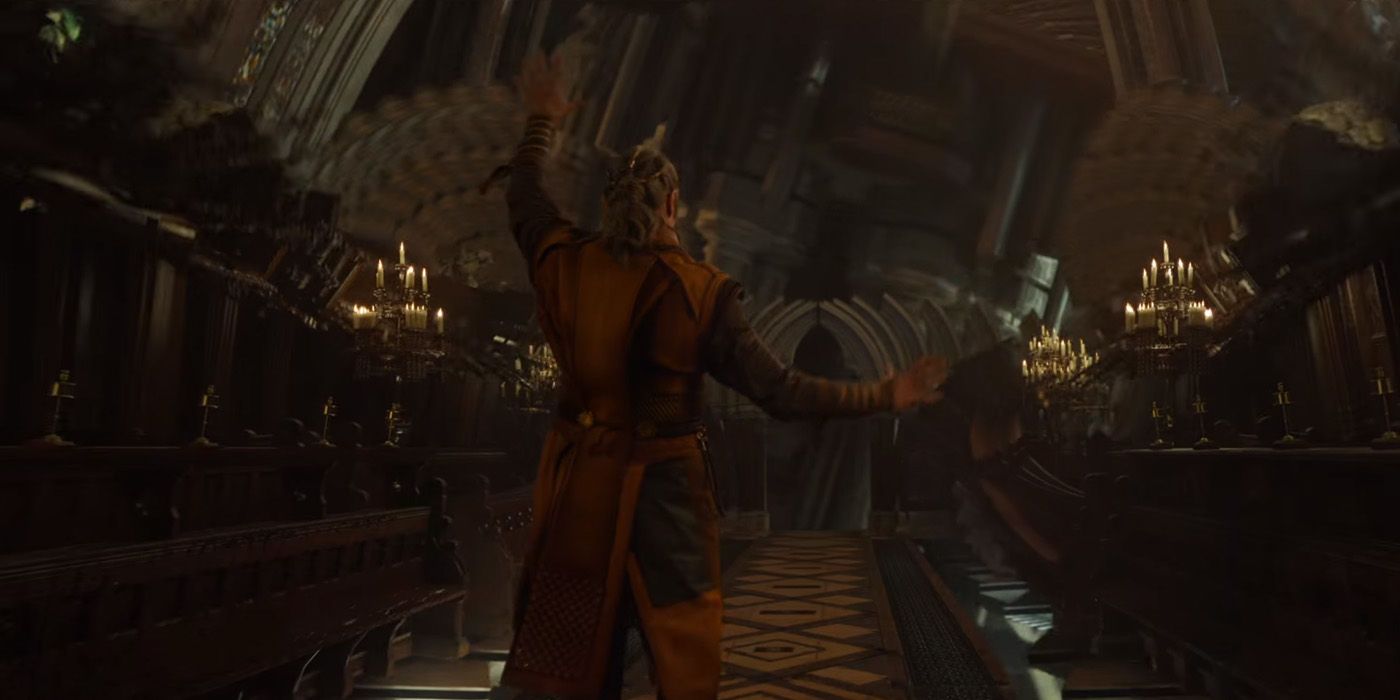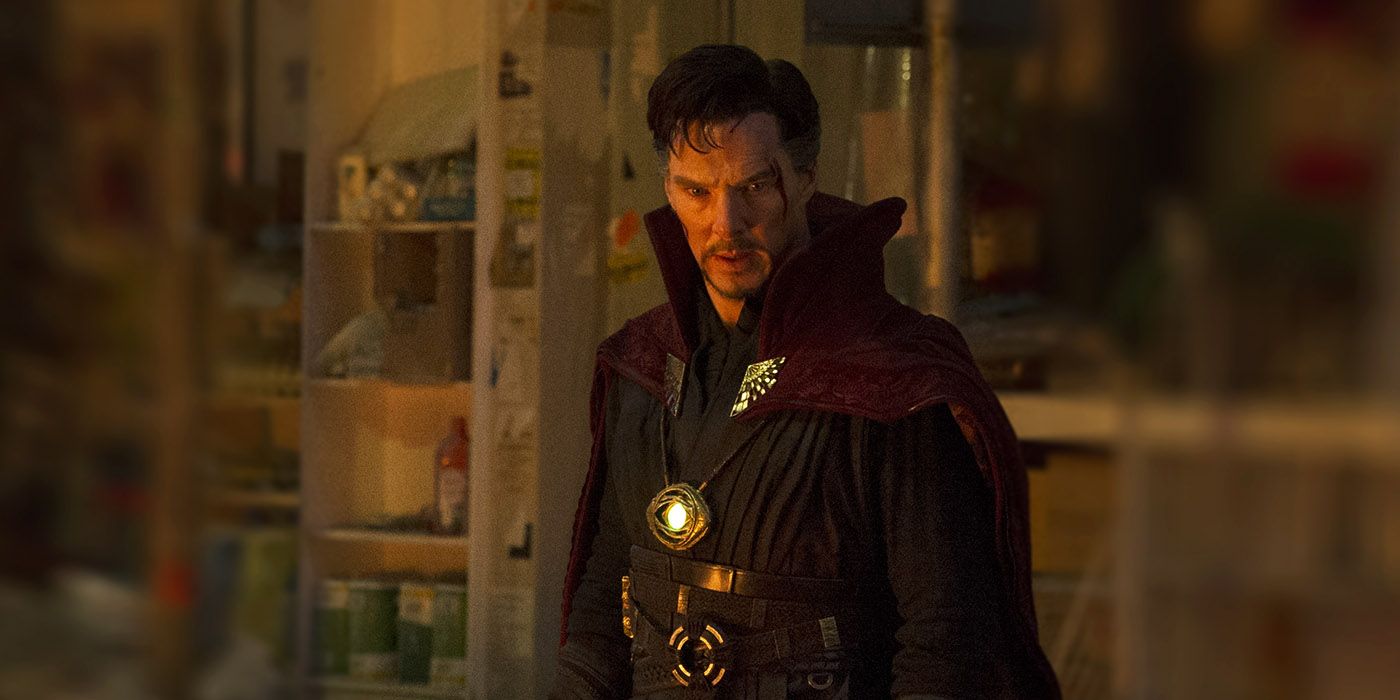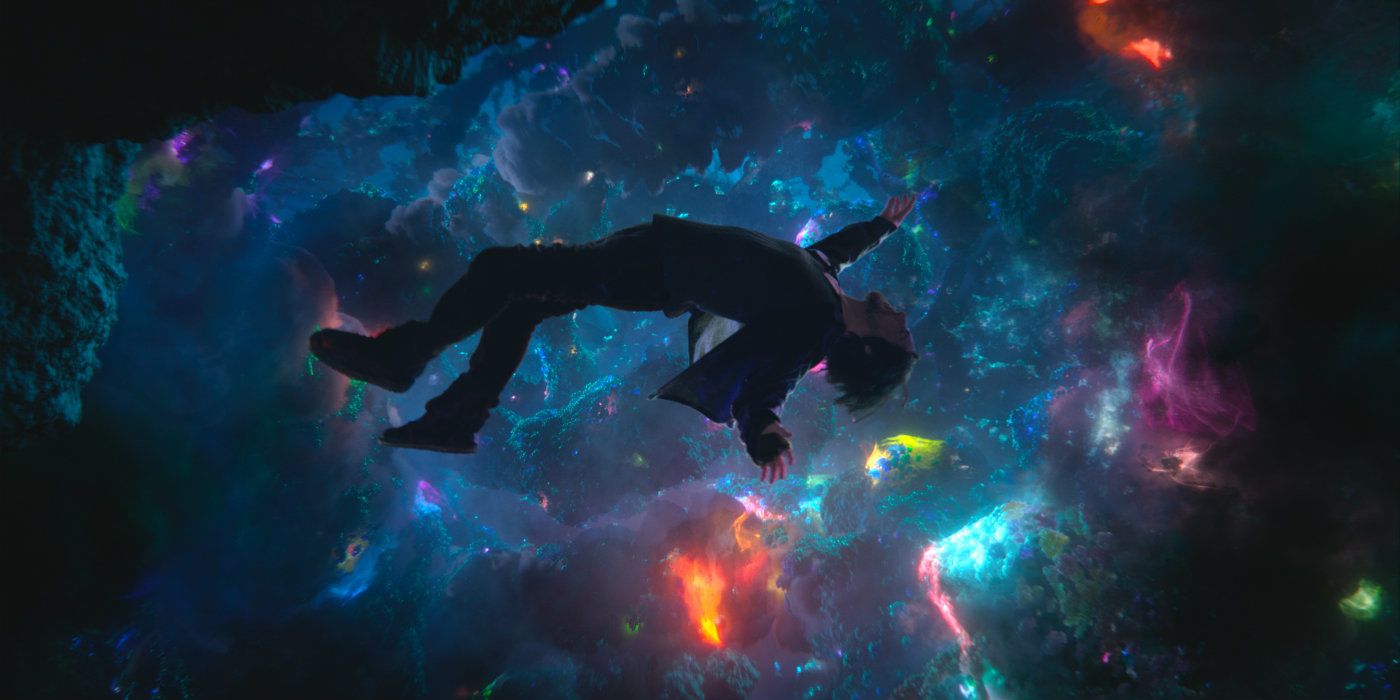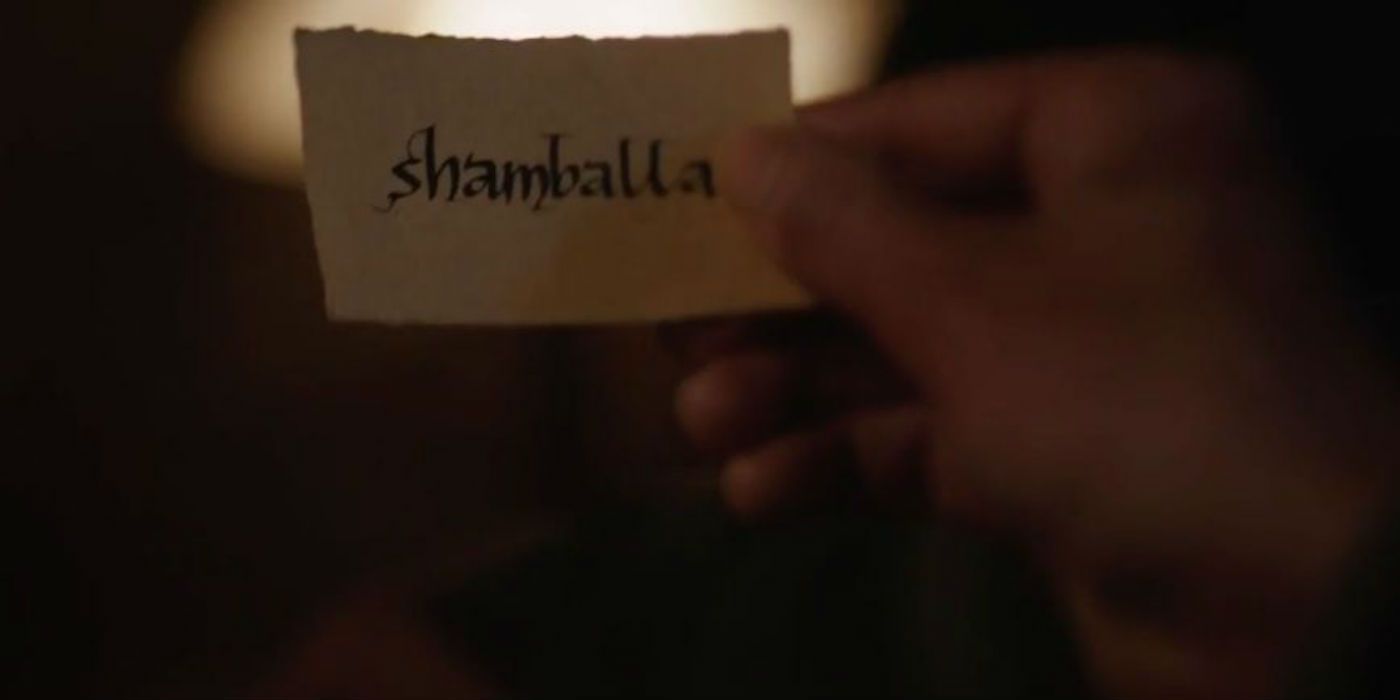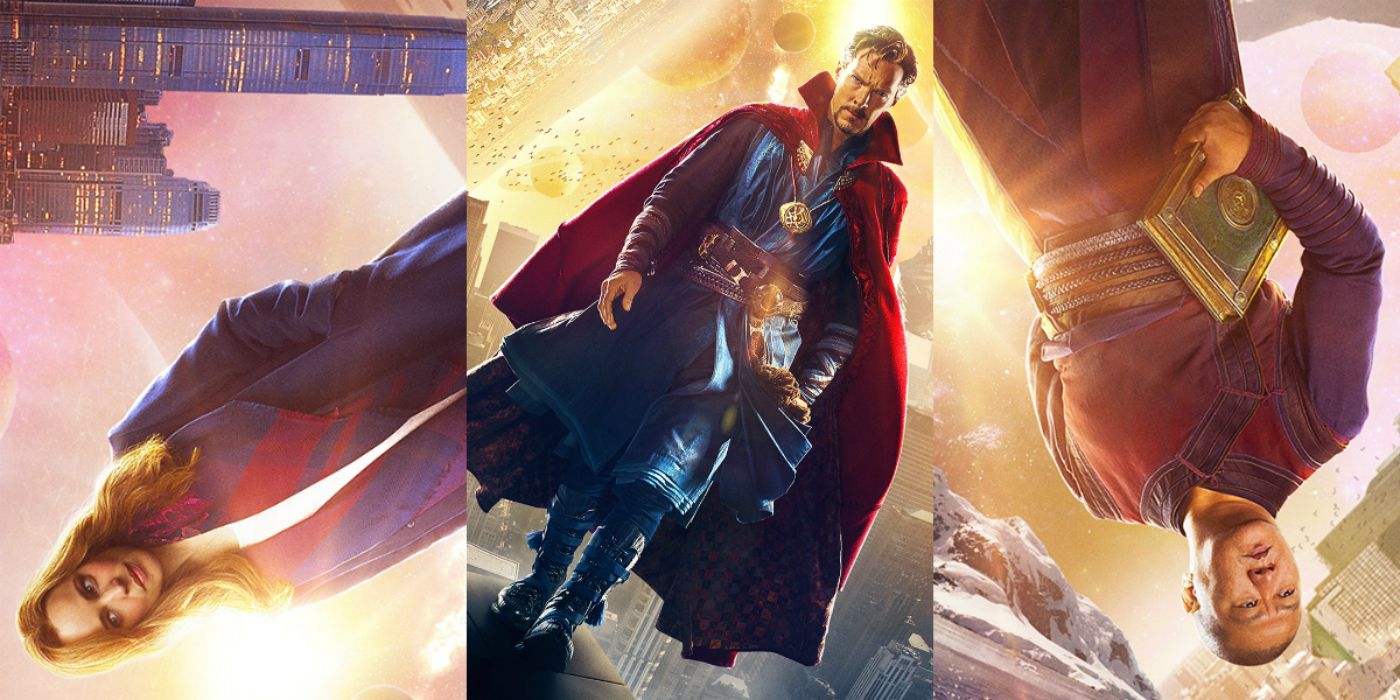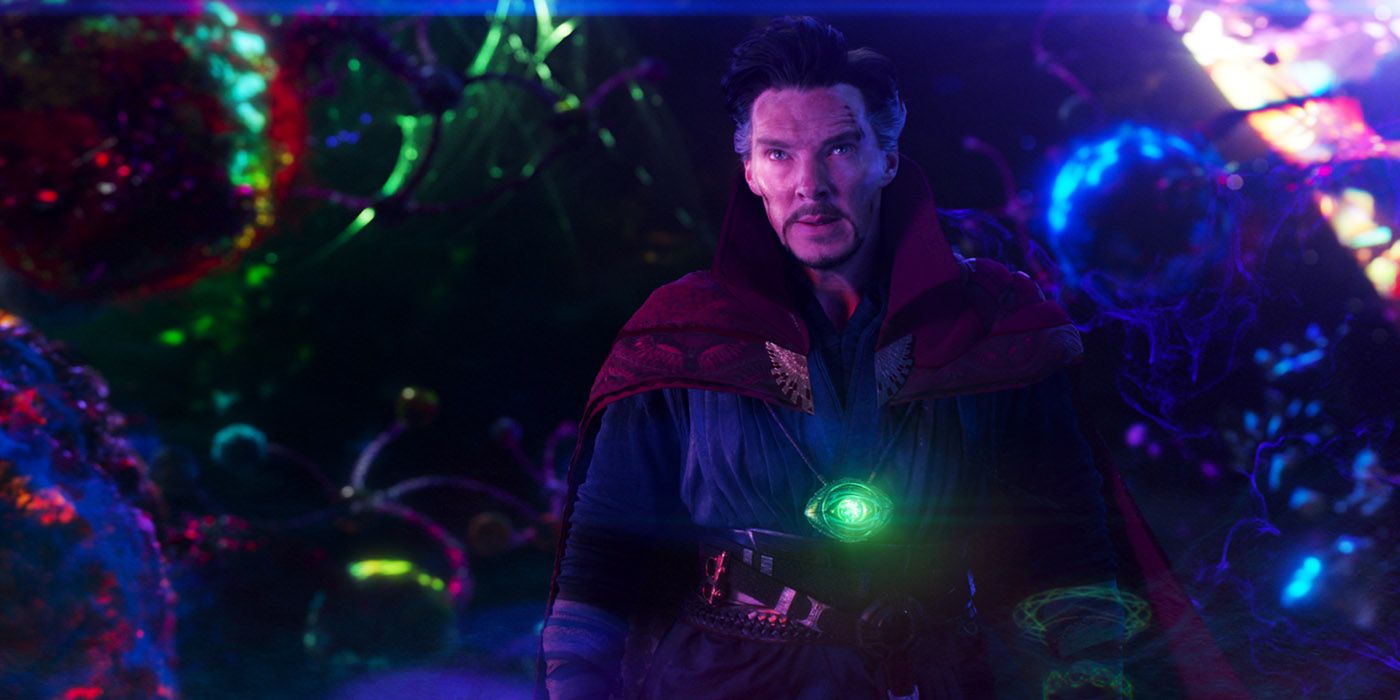[SPOILER WARNING]: Major spoilers ahead for "Doctor Strange," in theaters right now.
The success of "Doctor Strange" at the box office continues to propel Marvel Studios forward. What makes this all the more important is that it maintains the studio's Phase Three momentum, following the foundation of "Captain America: Civil War" last May. Making "Strange" a hit was no easy feat, given that it embarked into a new frontier of the Marvel Cinematic Universe.
RELATED: 15 Places Where The MCU’s Soul Stone Could Be
It recounted the origins of Dr. Stephen Strange, an egotistical neurosurgeon injured in a career-ending accident, who struggles to heal himself physically and seeks out desperate measures. He ends up harnessing the mystical arts at Kamar-Taj, carving out his destiny in an arduous journey. The result? He becomes one of Earth's mightiest protectors against the will of the dark entity, Dormammu. While the movie's reception was generally positive, it wasn't without its flaws so CBR decided to dissect what made it tick and what was left wanting.
15 Didn't Work: Underwhelming Kaecilius
Kaecilius (a former student of The Ancient One in Kamar-Taj) was the first wave of Dormammu's attack to absorb Earth into the Dark Dimension. His motivation stemmed from losing his family, inspiring a collusion to sacrifice the planet to Dormammu. This would allow him to reunite with his loved ones and live as immortals who aren't tethered to the effects of time. However, as cool as he looked, Kaecilius wasn't fleshed out properly and lacked that intimidation factor you'd want in a villain.
All emotional hooks pertaining to him fell flat with not so much as a flashback to draw out sentiment. Things felt stagnant as opposed to something groundbreaking, which was disappointing for the studio's foray into these uncharted (mystical) waters. This lack of insight into the character, played by Mads Mikkelsen, led to a lack of impact with his depiction unfolding in a formulaic manner, a-la Whiplash in "Iron Man 2" and Malekith from "Thor: The Dark World." It's only when his reasoning for the vendetta with The Ancient One was revealed that we felt depth, but overall, the "Hannibal" star failed to deliver the kind of impetus and oomph he usually does.
14 Did Work: The Ancient One's Retcon
The Ancient One's casting drew a lot of attention due its gender/ethnicity swap, as well as for adding a Celtic background to replace an East Asian one. While it did arouse fans' ire due to a missed opportunity in representation, it didn't greatly affect the story; however, one retcon that did was her harnessing energy from Dormammu's Dark Dimension. This allowed her to live for centuries, garnering the strength and wisdom needed to become Sorcerer Supreme and train like-minded sentries such as Mordo and Strange.
It was a clever deviation from the comics, where The Ancient One discovered the power of the mystic arts alongside his friend Kaluu, whom he'd end up vanquishing after the latter became corrupted. The Ancient One then honed his craft through mystical tomes such as the Book of the Vishanti, expanding his knowledge while aging much slower than humans. However, this iteration of the character made her more human and flawed as she fed off something she preached against. It's hypocritical, sure, but an act she justifies for the greater good, ergo making her actions understandable and relatable. Tilda Swinton threw a lot of passion into her solid performance and the emotional roller-coaster that ensued with an encroaching Dormammu rightfully left heroes torn in their allegiance.
13 Didn't Work: Strange & Stark Similarities
It was glaring how much of a resemblance Strange bore to Robert Downey Jr.'s iconic character. They may be "facial hair bros" in the comics, but the similarities in what Jon Spaihts and company wrote made it tough to separate the two: their cavalier attitudes, the arrogance, the affinity for fast cars and of course, their love of fancy suits all felt too familiar.
What emerged was the same origins trope from Marvel Studios where we saw someone with extreme intelligence and potential wasting away due to a stuck-up and selfish attitude, only for a life-threatening incident to put them on a new path to greatness; one which ended with each of them returning from physical and mental wastelands in hero-mode. Cumberbatch's dismissive attitude early on and his overall demeanor compounded this aura of Iron Man-lite, with shades of Chris Hemsworth's "Thor" littered here and there as if taken from a template. If the MCU wants to differentiate their heroes then work needs to be put in because this lack of a distinct personality for Strange could be exposed when he appears in "Avengers: Infinity War."
12 Did Work: The Descent Of Mordo
In the comics, Karl Mordo held an undying vendetta against his teacher, The Ancient One, further fueled by a severe jealousy of Strange joining their ranks. While still positioning Mordo under the tutelage of The Ancient One, the movie adopted a different approach with him as a mentor to Strange. The ensuing camaraderie between Mordo (played by Chiwetel Ejiofor) and Strange was raw and charismatic, highlighted when tension built between them.
What made Mordo stand out was how he reacted when he thought that the philosophies he based his life on as a sorcerer were being abused. Finding out about The Ancient One's secret to immortality and then experiencing Strange bending certain rules to save the day rocked his moral compass. By film's end, you can't help but empathize with his extremist belief where he wants to realign things to the path of righteousness. Some are calling Mordo a traitor after what transpired, but he has clear reason to admonish a few select personnel for tinkering with things they shouldn't have. This turn of events definitely paves the way for that visceral sequel director Scott Derrickson has been eyeing.
11 Didn't Work: Forced Humor
We get that the MCU is distinguished by lighter and humorous tones in the face of impending doom: a stark contrast to what DC Entertainment puts out as seen with "Man of Steel," "Batman V Superman" and "Suicide Squad." "Iron Man" laid down the law and we saw its quippy attitude trickle down into all Marvel Studios movies. It's one part of the formula that works when it's organic, as seen with Stark or Peter Quill (played by Chris Pratt) in "Guardians of the Galaxy" or Scott Lang (Paul Rudd) in "Ant-Man."
However, outside of the Cloak of Levitation's antics, there were a lot of jokes that felt like unnecessary filler. The banter with Strange and Wong, the introduction of our hero to Kaecilius and the scene where the mops fall to startle Palmer after she operated on Strange are examples of this. A couple of jokes are fine, but trying to recapture that RDJ-Iron Man vibe constantly is highly unoriginal and gets repetitive quickly. This is best summed up when the Cloak wiped Strange's tears after The Ancient One died; a moment that really needed no injection of humor to dilute the grief that should have been the focal point.
10 Did Work: The Toned-Down Romance
Romance in the MCU can be rushed and underdeveloped, as we saw with Steve Rogers and Sharon Carter in "Civil War," or long-winded as per the Stark-Pepper Potts and Thor-Jane Foster sagas. In the case of "Civil War," there was a lot of action tearing the Avengers apart, so that could be a valid reason why the love sub-plot wasn't given much attention. As for the "Iron Man" and "Thor" properties, the storytelling there really harped on the romantic angle and dragged it out way too much.
Pepper and Foster were consistently used as damsels-in-distress in their respective franchises and it felt like their arcs added style but no substance. This was rectified in "Strange," though, and it was a breath of fresh air to see Rachel McAdams' Christine Palmer (known as Night Nurse in the comics) establish herself as more than a crutch. She had a sense of identity in her support role, but in the little we saw, she proved herself as Strange's pulse: saving his life, before and after his transformation, while keeping her essence as a confused mortal. Their affection gained elaboration when the need arose and was left up in the air to smartly give the impression of dimension-crossed lovers.
9 Didn't Work: Lack of Magical Weapons & Spells
Introducing the idea of magic was always going to be a difficult task, given that the MCU has always dealt with science, but the lack of magic in this film was astounding. Seeing the weapons in the three Sanctum Sanctorums underutilized was an even bigger letdown. Case in point was the Wand of Watoomb, which Wong wielded at the end only to have the movie cut to Dormammu's destruction. As for Strange, apart from the Cloak, he failed to use much outside of the Eye of Agamotto's time-altering abilities and a few teleportation charms.
Even his power set was found lacking. There was no Book of the Vishanti leveling him up or Crimson Bands of Cyttorak binding opponents, either. The library, artifacts and weapons affiliated with the mystic arts ended up feeling wasted. Astral projection, mystical shields and "sling rings" just weren't enough to paint an assertive Strange. We would have loved to see the Images of Ikonn (spells to create duplicates) or the Mists of Morpheus, which could put friend or foe to sleep. Nonetheless, we live, we learn and in the mid-credits teaser, Strange did appear to be more empowered with his signature yellow gloves as he refilled Thor’s beer, hinting at a power-up.
8 Did Work: The Cloak Of Levitation
The Cloak of Levitation brought the majority of genuine laughs to this film and that's because it was shaped as a character. What made it a delight was how it protected Strange like a magical armor. Not only did it shield him and allow him to fly, but it acted like a sidekick. The Cloak bore personality and charm, which is unsurprising given that it was inspired by Rocket Raccoon from "Guardians of the Galaxy."
Its popularity was enhanced by its distinct combat style, which added a unique flair to a film intent on pushing boundaries (in a way not dissimilar to the magic carpet in Disney's "Aladdin"). That's a good sign, given how integral and symbolic the Cloak is when you look at how the good Doctor has been interpreted and represented over the years. From all the activity that the Cloak faced when draped on Strange, it's highly apparent that this partnership is an endorsement to him eventually becoming the Sorcerer Supreme. We can't wait to see this stamp of approval made official when Strange and Mordo clash. We saw how familiar the latter was with these kinds of mystical elements, which means Mordo could also expose vulnerabilities when the time comes.
7 Didn't Work: Dormammu
You'd expect Scott Derrickson's specialization in the horror genre to bring forth a haunting and scary final boss. Instead, Dormammu proved to be a tremendous disappointment. His purple hue and ethereal presence felt like a cross between Thanos and the Galactus cloud from "Fantastic Four: Rise of the Silver Surfer," leaving fans wondering where was the malevolence that Derrickson crafted with "The Exorcism of Emily Rose" and "Sinister." Visually, Dormammu felt bland, which could be chalked up to expectations of his fiery stature from the comics; an ironic pitfall given that Cumberbatch did motion-capture for him.
Whether it was his look or even his voice, Dormammu's presence failed to resonate; it felt like he was stuck in just to say a major villain was in the film. We're hoping that if the sequel uses Nightmare, as was intended for the initial movie, he won't be watered down and is given free rein to create an atmosphere of terror. There's no dread and personality instilled in Dormammu, nor is there a hint of fear evoked. While it was nice watching him lose in a cerebral finale with Strange, it would have been better to see him in a somewhat corporeal form scrapping.
6 Did Work: Visual Aesthetic
If psychedelic was what this move aimed for, it definitely hit the mark! A few influences came to mind while watching these sorcerers throw down. "The Matrix" is one example which stood out in the time-affected action sequences. When it came to the fights during the warping of reality and its infrastructure, movies like "Inception," "The Cell" and in terms of fighting-style, "Crouching Tiger, Hidden Dragon" were the comparisons easily made.
Seeing this play out in IMAX-3D was an invigorating experience, and in terms of visually moving ahead of the MCU field, "Strange" takes the cake. Its visual brand is so different because of what the movie was trying to convey: a universe of alternate dimensions that could be uniquely fractured but still remain hidden to the average eye. They compensated well with the trippy vibe, which managed to make up for the lack of horror at hand. What made the visual stamp all the more impressive was how it was used to traverse the multiverse and the overall cosmic span of the MCU. The result was a more artistic and creative spin.
5 Didn't Work: The Eye Of Agamotto
Watching Strange use the Eye was a huge moment for any Marvel fan, but having it as a Time Stone, just as we predicted, felt like a cop-out because it detracted from the traits it possessed in the comics. In addition to allowing Strange to peer into the past, it boasted transportive powers, enabled the user to read minds, was used to shed light on deceptive illusions and overall, it was used to combat supernatural threats such as demons, zombies and anything involving the dark arts. Here, the relic is relegated to the macguffin role for when Thanos shows up for the party.
There wasn't a sense of importance to it or at least one of awe as it was used by Strange so nonchalantly, even after he was educated by Wong on its repercussions. Even more odd was that Wong seemed to be receptive to its use to reverse the damage done by the villains, while Mordo alone took issue. This was a get-out-of-jail card that most heroes wouldn't use, so we're eager to witness the ramifications. Having it take out two villains without mystic-on-mystic fisticuffs continued the devaluation the Eye. It'll be intriguing to hear how they tie in the Vishanti such as Agamotto if they aim for backstory later on. As of now though, the Eye feels more like a prop than a precious artifact.
4 Did Work: The Multiverse
This was one promise that the movie lived up to in spades. "Strange" continued to paint the MCU's vision, with the sling rings used for hopping between dimensions. On top of that, when The Ancient One first liberated Strange's mind to things beyond the physical realm, there was a tangible connection made to the multiverse, drawing parallels to the microverse of "Ant-Man."
This added layers to the unknown territory out there just waiting for heroes like the Avengers, but more importantly, it shone light on new areas where otherworldly threats (such as Mephisto) could emerge. What also stoked the fanboy fire was the vagueness and obscurity regarding the cosmic aspect of Marvel Studios and just how it ties into these alternate dimensions, as well as the multiverse on the whole. This appeared to be done on purpose to keep the potential alive for exploratory storytelling later on down the line, in this Phase or the next. Heck, it even makes you wonder if these doorways could grant Thanos easy access when he crusades to collect his Infinity Stones.
3 Didn't Work: Mediocre Easter Eggs & Cameos
Easter eggs and cameos are meant to add value to comic book movies. If they don't contribute that much to the current plot, they usually hint at some things in store for later. If not, then it's just to amplify the awesome factor of a given film. However, if they're lazily done, it shows that they're inserted just for the sake of having them, as is the case with "Strange." There were quite a few easter eggs, but the majority didn't make waves or contribute to anything relevant. Stan Lee on the bus reading "The Doors of Perception" wasn't that special, nor was the evil Tina Minoru, wielding the Staff of One from"Runaways." Black Knight's helmet also flew by so quickly that it barely registered and Daniel Drumm (brother of another Sorcerer Supreme in Brother Voodoo from the comics) was killed off in the blink of an eye. You'd think they'd give more screen time to build potential allies.
The few that hit were the Shamballa wi-fi barb (referencing the "Into Shamballah" graphic novel) and Kaecilius' squad being turned into creatures resembling The Mindless Ones: thrown into Dormammu's dimension to rot. There was also the passing reference to The Living Tribunal, which could spell interesting things for the MCU's cosmic ventures. Other than these, though, there wasn't anything noteworthy that really had you gasping, like when you saw Hawkeye in "Thor" or Cap's shield in "Iron Man." Maybe the novelty of easter eggs and cameos has worn off? Or maybe we geeks are too difficult to please. Either way, when it comes to these subtle and not-so-subtle nods, we'd like the filmmakers to concentrate on quality as opposed to quality.
2 Did Work: Cast Chemistry
If your plot has holes, one way of plugging them would be with a solid cast. This was definitely the case here. The chemistry with Strange and everyone from The Ancient One to Mordo to Christine felt natural and flowed organically. The interactions with Kaecilius were off but that's because the latter was poorly written into a corner that made him a tad peripheral. Overall though, the rest of the cast turned in individual and collective performances that couldn't be faulted as they masked the script's cracks.
What shocked us most was that Cumberbatch didn't even steal the show. Swinton and Ejiofor carried the weight of the film and that's because they were prominently steeped in the roles of profound, original characters, as opposed to Strange, who for the bulk of the film failed to find that moment to really define his role outside of the movie's climax. Christine had hers in nursing Strange back to life while The Ancient One had hers through self-sacrifice. Mordo and the ever-trusty Wong didn't really have said moment either, but they felt like support that mattered because they nurtured our hero wisely. With a better script, we're sure the cast could conjure up even more magic.
1 Didn't Work: Rushed Ending
The final battle with Kaecilius and Dormammu was one of the most abrupt in the MCU, with an ending that didn't feel like a payoff at all. Strange reversed time to restore Hong Kong's destruction using the Eye and then trapped Dormammu in a game of bargains via a time loop, forcing him to release his grasp on Earth. He mystically nagged Dormammu to death by having the villain kill him multiple times, which more or less sums up "Doctor Strange's" climax. Don't get us wrong, it's nice to see ingenuity being used, but this finale was nothing more than a blur.
Strange didn't even tussle that much with Kaecilius, who already proved superior in hand-to-hand and spell-to-spell combat, so to see him skip this villain without avenging his fallen master and move on to the big baddie was rudimentary at best. Not to mention, you never got to see the protagonists and antagonists flex their magical muscles in a wowing fashion.
There was no grand spectacle like most MCU finales, which usually rise to a crescendo, as seen with the symphonic storytelling notes of "Captain America: The Winter Soldier" and "Civil War." Instead, the conclusion here pans out like a train that lost steam, with a conductor who asked everyone to get off just when they were anticipating afternoon tea.
Thoughts on the picks we conjured? Sound off in the comments and let us know what hit home (or didn't) for you!

